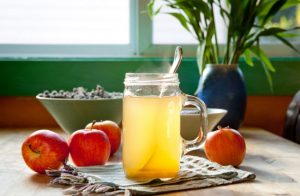A bright yellow spice commonly used in Indian cuisine, turmeric is one of the most powerful herbs in the world. With its myriad healing properties and health benefits, this spice is one you should seriously consider adding to your cooking repertoire if you haven’t already. Keep reading to learn more about the active ingredients in this spice and what benefits they provide.
WHAT ARE THE ACTIVE INGREDIENTS?
Known by the scientific name Curcuma longa, this spice comes from a rhizome belonging to the same family as ginger. Native to the Indian subcontinent and parts of Southeast Asia, turmeric has been used in Ayurvedic medicine for thousands of years. The spice was first used as a dye, and eventually came to play an important culinary role, known for its warm and peppery flavor, bright orange-yellow color, and mustard-like aroma.
The primary active ingredient in this yellow spice is curcumin, an antioxidant and natural anti-inflammatory. In addition to giving the spice its characteristic golden hue, curcumin is responsible for most of the health benefits this spice has to offer. Not only does this spice offer protection against free-radical damage and chronic inflammation, but it offers antidepressant, anticoagulant, analgesic, and anti-arthritic benefits as well.
1. FIGHTS INFLAMMATION
Though acute (temporary) inflammation is beneficial in protecting the body against pathogens and in stimulating the healing process, chronic inflammation has been linked to many diseases such as heart disease, cancer, and Alzheimer’s. The anti-inflammatory benefits of curcumin have been proven just as powerful as the top anti-inflammatory drugs in fighting inflammation on a molecular level.
2. PREVENTS OXIDATIVE DAMAGE
The common link among many age-related and chronic diseases is oxidative damage. The antioxidant mechanisms of curcumin actually neutralize harmful free radicals while also boosting the body’s antioxidant capacity to create a double-edged sword in the fight against disease and aging.
3. IMPROVES BRAIN HEALTH AND FUNCTION
The active ingredient curcumin boosts brain-derived neurotrophic factor (BNDF) levels which supports cognitive function, slowing the progression of neurodegenerative diseases such as Alzheimer’s and other forms of dementia. It may also improve learning and boost memory in the hippocampus area of the brain.
4. REDUCES RISK FOR HEART DISEASE
By reducing cholesterol, improving blood pressure, and fighting inflammation, this pungent spice helps to reduce the risk for heart disease. It has also been shown to improve endothelial function as well as blood clotting for overall heart health.
5. HELPS PREVENT AND TREAT CANCER
Though it may not be a cure, turmeric and its active ingredient curcumin have shown potential in preventing and improving the treatment of cancer. The antioxidant benefits of this spice have been shown to reduce tumor growth, particularly for colon, breast, bowel, and stomach cancers.
6. RELIEVES ARTHRITIS PAIN
The powerful anti-inflammatory benefits of this spice have been shown to relieve pain and swelling for numerous forms of arthritis. In one study, 45 patients with rheumatoid arthritis were given curcumin supplements or Diclofenac sodium, a common arthritis medication. The results revealed that the curcumin group experienced the highest percentage of improvement.
7. IMPROVES MOOD
Numerous research studies have shown this spice to offer antidepressant benefits similar to those offered by common medications like Prozac. In one particular study, 60 patients with depression took fluoxetine (Prozac), curcumin supplements, or a combination of both. The results of the study revealed that curcumin was just as effective as Prozac in managing depression and alleviating symptoms.
8. FIGHTS AGING AND CHRONIC DISEASE
The antioxidant benefits of this yellow spice help to slow the process of aging and may also prevent chronic diseases such as Alzheimer’s, metabolic disorder, cardiovascular disease, and diabetes. By preventing or slowing the progression of these diseases, this spice may increase longevity as well.
This flavorful spice is most commonly used in curries and other East Asian dishes, though you can also use it to season vegetables, rice, soups, and stews. Blending turmeric into a fresh smoothie or brewing it into tea are two quick and easy ways to boost your consumption of this healing spice.








Leave a reply